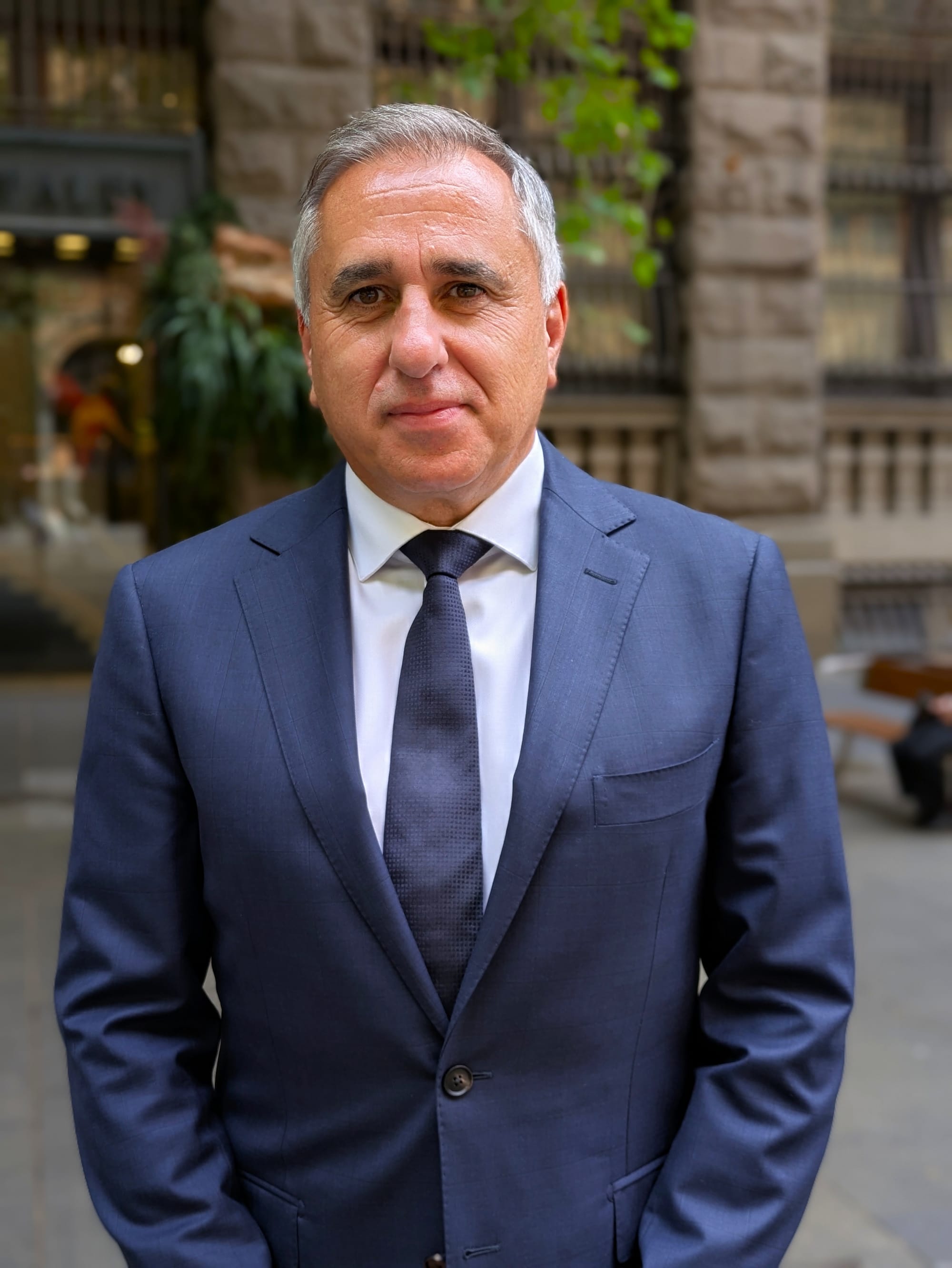Retirement
Can super be used to buy property?
The first home super saver (FHSS) is a special scheme in superannuation for first home buyers. Introduced by the Australian government in 2017 to help Aussies save up for a home deposit, FHSS allows Aussies to withdraw from their contributions for the sole purpose of purchasing their first home.
Can super be used to buy property?
The first home super saver (FHSS) is a special scheme in superannuation for first home buyers. Introduced by the Australian government in 2017 to help Aussies save up for a home deposit, FHSS allows Aussies to withdraw from their contributions for the sole purpose of purchasing their first home.

However, the Australian Taxation Office (ATO) enforces strict rules that eligible individuals must adhere to. There are also limitations on the amount of contributions and withdrawal that a member can make under the FHSS, which is why interested individuals should first understand the scheme.
Consider the following before allocating super contributions to the FHSS.
Are you eligible for FHSS?
FHSS was introduced specifically to help home buyers save up for their first home. This means ATO will only consider those who have never owned a home or any type of real estate property — including an empty block of land — as eligible for the scheme.
To be eligible for the FHSS, applicants must be at least 18 years old and satisfy both conditions below:

- They are currently living in or intend to live in the property as soon as practicable; and,
- They plan to live in the property for at least six months within the first year of ownership or after it is practicable to move in.
The only exception for previous homeowners is if they lost their home due to severe financial hardship.
How to apply for the FHSS
There’s no formal application process for the FHSS. The Australian Taxation Office (ATO) simply takes into account the annual eligible super contributions in the determination when applying for a withdrawal under the FHSS scheme.
Per the ATO, applicants simply have to ensure that they are eligible for the scheme before applying for a superannuation withdrawal for a first home. However, super funds may have existing limitations that can prevent a member from receiving their money.
The ATO recommends contacting the nominated super fund to verify if it will dispense the FHSS release amount and if there are accompanying charges within the fund.
All requests for determination and release under the FHSS must be submitted to the ATO.
How to make FHSS contributions
The ATO will only count voluntary salary sacrifice and non-concessional contributions beginning July 1, 2017 for the FHSS scheme.
The FHSS also forms part of the contributions limit which, for financial year (FY) 2019–20 are $25,000 for pre-tax and $100,000 for post-tax contributions.
Salary guarantee contributions don’t count in the FHSS determination.
FHSS withdrawal limits
Withdrawals under the FHSS scheme have been allowed since July 1, 2018 but there is a limit to the amount that can be released.
Per the ATO, the FHSS maximum release amount is 100 per cent of post-tax contributions and 85 per cent of the salary sacrifice contributions. However, there is an existing limit on the total contribution amount that can be released. These are:
- $15,000 for any single year; and,
- $30,000 total limit across all years
Once the FHSS maximum release amount is computed, its deemed earnings will be computed using the 90-day Bank Bill Swap Rate (BBSW) plus 3 per cent.
The ATO explains that each eligible individual may request to withdraw up to $30,000 of their super contributions plus its deemed earnings under the FHSS. There is also no limit on the number of eligible individuals who can use the FHSS to buy the same property, which means couples can save up to $60,000 to buy the same property.
Likewise, a group of six eligible friends may use the FHSS and pool their money together (a total of $180,000) to buy the same property.
FHSS time limit
Release or withdrawal under the FHSS scheme is a one-time only application. This means an individual who may have been eligible but was unable to purchase a home after a withdrawal request will no longer be allowed a second withdrawal.
An applicant must sign a contract to purchase or build a property within 12 months of receiving the released super contributions. Otherwise they must either apply for an extension or recontribute the withdrawn amount as a non-concessional contribution.
If they fail to do either, ATO will automatically apply the FHSS tax on the assessable FHSS amount. The FHSS tax is a flat 20 per cent regardless of the applicant’s marginal tax rate.
FHSS and taxes
Taxes apply to super contributions and withdrawals under the FHSS scheme. FHSS contributions are taxed according to the type of voluntary contribution.
- Concessional contributions are taxed within the fund at 15 per cent
- Non-concessional contributions are not taxed
Once the fund member files a request for FHSS determination to the Commissioner of Taxation in order to withdraw their savings, the ATO will compute for the maximum FHSS release amount.
If the amount is acceptable to the applicant, they may request to release the amount stated. However, the maximum FHSS release amount is still subject to withholding tax calculated at:
- The applicant’s marginal tax rate (including Medicare levy) less a 30 per cent tax offset
- 17 per cent if ATO is unable to estimate the applicant’s marginal tax rate
The released amount must be reflected as assessable income in the tax return of the tax year the applicant filed a request for release under FHSS.
Members may file a request for determination multiple times but may only apply for release once.
Is the FHSS risk-free?
The FHSS is a tax-advantaged way to save up for a home deposit or payment, however, that doesn’t necessarily mean that it is risk-free.
Saving through the FHSS means making additional voluntary contributions and investing the money in the nominated fund’s assets, which means it will exposed to the same types of risk.
Furthermore, the final amount that will be released to the applicant may be higher or lower than expected because earnings from the contributed money for FHSS is calculated using the 90 day BBSW plus 3 per cent, regardless of the fund’s actual performance.
Important reminders from the ATO
The FHSS scheme was intended to help Australians purchase a home, which means the withdrawn money cannot be used to buy an investment property — unless they satisfy the residency requirement first.
Likewise, the ATO disallows using the released contributions under FHSS for the following types of properties:
- A motor home
- A houseboat
- Vacant land
- Any type of property that cannot be occupied as a residence
ATO also reminds potential applicants to wait until the first FHSS amount is released before signing the purchase or construction contract. ATO must also be notified within 28 days of signing the contract so they wouldn’t automatically apply the FHSS tax.
About the author

About the author


Superannuation
Rest appoints experienced governance expert to bolster superannuation fund
Rest, one of Australia's largest profit-to-member superannuation funds, has announced the appointment of Ed Waters as the new Company Secretary. Waters, who brings with him over 15 years of extensive ...Read more

Superannuation
Small businesses brace for cash flow challenges as Payday Super becomes law
With the new Payday Super legislation now enacted, small businesses across Australia are preparing for a significant shift in how they manage superannuation contributions. The law, which mandates a ...Read more

Superannuation
Rest launches Innovate RAP to support fairer super outcomes for First Nations members
In a significant move towards reconciliation and inclusivity, Rest, one of Australia's largest profit-to-member superannuation funds, has unveiled its Innovate Reconciliation Action Plan (RAP)Read more

Superannuation
Payday super legislation promises fairer retirement for part-time and casual workers
In a landmark development for the Australian workforce, the recently passed Payday Super legislation is set to transform the retirement landscape for countless part-time and casual workersRead more

Superannuation
Payday Super passes as Employment Hero, OZEDI and Zepto unite to help small businesses meet new seven-day payment rule
With the Payday Superannuation Bill officially passing through Parliament, Australian businesses are now less than eight months away from a major shift in how superannuation contributions are made — ...Read more

Superannuation
Aware Super appoints Simon Warner as Chief Investment Officer
Aware Super has announced the appointment of Simon Warner as Chief Investment Officer, effective 1 December 2025, following a competitive global search to replace outgoing CIO Damian Graham, who ...Read more

Superannuation
Employers call for pragmatic safeguards to ensure Payday Super reform succeeds
Employment Hero chief executive Ben Thompson has urged the federal government to introduce a phased rollout and reciprocal safeguards to support small businesses as the Payday Super reform approaches ...Read more

Superannuation
Aware Super elevates tech leadership with strategic appointment of Richard Exton
Aware Super, one of Australia's largest industry super funds, has announced a pivotal appointment to its executive team, underscoring the growing importance of technology, data, and artificial ...Read more

Superannuation
Rest appoints experienced governance expert to bolster superannuation fund
Rest, one of Australia's largest profit-to-member superannuation funds, has announced the appointment of Ed Waters as the new Company Secretary. Waters, who brings with him over 15 years of extensive ...Read more

Superannuation
Small businesses brace for cash flow challenges as Payday Super becomes law
With the new Payday Super legislation now enacted, small businesses across Australia are preparing for a significant shift in how they manage superannuation contributions. The law, which mandates a ...Read more

Superannuation
Rest launches Innovate RAP to support fairer super outcomes for First Nations members
In a significant move towards reconciliation and inclusivity, Rest, one of Australia's largest profit-to-member superannuation funds, has unveiled its Innovate Reconciliation Action Plan (RAP)Read more

Superannuation
Payday super legislation promises fairer retirement for part-time and casual workers
In a landmark development for the Australian workforce, the recently passed Payday Super legislation is set to transform the retirement landscape for countless part-time and casual workersRead more

Superannuation
Payday Super passes as Employment Hero, OZEDI and Zepto unite to help small businesses meet new seven-day payment rule
With the Payday Superannuation Bill officially passing through Parliament, Australian businesses are now less than eight months away from a major shift in how superannuation contributions are made — ...Read more

Superannuation
Aware Super appoints Simon Warner as Chief Investment Officer
Aware Super has announced the appointment of Simon Warner as Chief Investment Officer, effective 1 December 2025, following a competitive global search to replace outgoing CIO Damian Graham, who ...Read more

Superannuation
Employers call for pragmatic safeguards to ensure Payday Super reform succeeds
Employment Hero chief executive Ben Thompson has urged the federal government to introduce a phased rollout and reciprocal safeguards to support small businesses as the Payday Super reform approaches ...Read more

Superannuation
Aware Super elevates tech leadership with strategic appointment of Richard Exton
Aware Super, one of Australia's largest industry super funds, has announced a pivotal appointment to its executive team, underscoring the growing importance of technology, data, and artificial ...Read more








